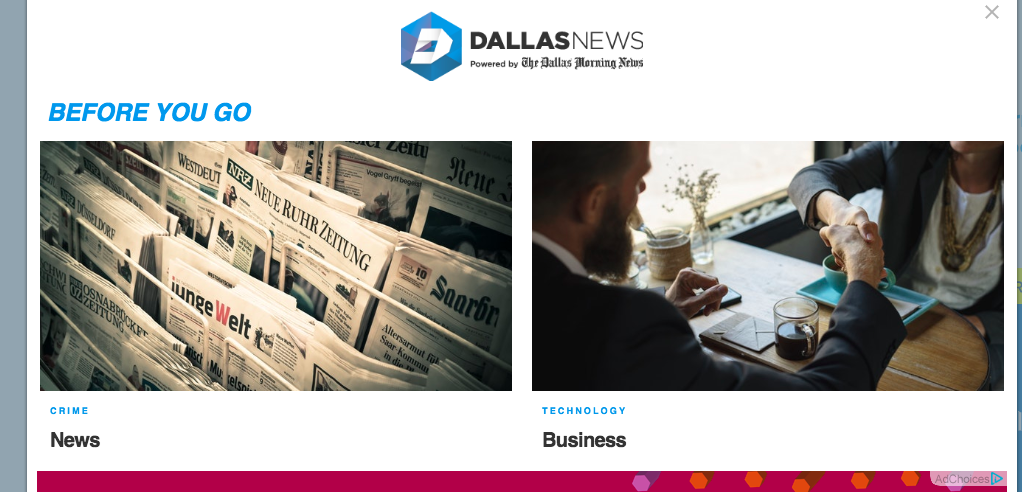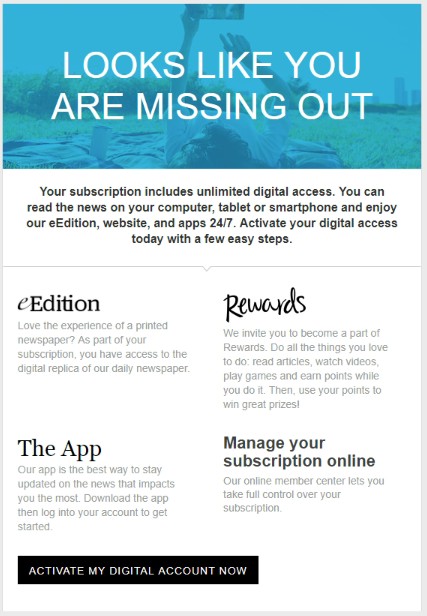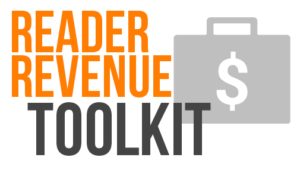 Say you’ve implemented a well-designed program to onboard new customers. It’s getting them to look back favorably on their decision to subscribe, and to learn how they like to interact with your content.
Say you’ve implemented a well-designed program to onboard new customers. It’s getting them to look back favorably on their decision to subscribe, and to learn how they like to interact with your content.
What’s your next priority? At this point, the goal should be to deepen the relationship — to build loyalty and make them like you even more.
One way to strengthen the bond with recent subscribers is to offer benefits and “extras” that add value. Programs that reward customers in ways beyond content may top the list. Done right, they are a potent tactic to increase engagement and retention, enhancing the customer experience and sense of connection.
Publishers also can build the relationship by finding ways to engage print subscribers digitally, such as by offering inducements to establish online accounts.
Turn passive readers into engaged members
Example: The Sacramento Bee, winning rewards while having fun
The Sacramento Bee offers rewards to digital users who may earn points by reading the news, playing games, watching videos or taking quizzes. They may then use their points to enter sweepstakes, where they can win gift cards, electronics, tickets to movies and other prizes. (One week in February, the featured prizes were a $250 “Valentine’s Date Night” package of dinner and movie, a $50 Target gift card and an umbrella.)
This strategy is also designed to encourage print subscribers to activate digital access. If print subscribers wish to participate in the rewards program, they are asked to set up a digital account.
Example: The San Francisco Chronicle, expanding what it means to subscribe
The emerging concept of what it means to be a subscriber is much broader than it used to be, with a new focus on adding opportunities and benefits.
A prime example is the San Francisco Chronicle, which is encouraging subscribers to join its membership program. The program promises to bring Chronicle coverage to life “with unique experiences” around the region, such as entry to exclusive events. Benefits include VIP access to local happenings involving sports, food and wine and more, along with discounts and other attractions.
Membership is free to subscribers. To join, however, subscribers who have not yet done so are asked — in large letters — to launch digital access: “ACTIVATE YOUR MEMBERSHIP ONLINE.”
Example: The Dallas Morning News, using online content to engage readers
One way to deepen the connection is to draw readers’ attention to content they might otherwise miss.
When it works, this tactic enhances users’ experience and increases their sense of the subscriptions’ value. In the following pop-up, the Dallas Morning News showcases sections of the site that the reader did not visit, in this case news about crime and technology.
The approach — “before you go” — employs a conversational style to entice the user to stick around a while longer and explore more variety of content.
Targeting print readers for the digital experience
Example: McClatchy Newspapers, onboarding print subscribers to digital
When legacy print subscribers start to engage with the e-edition, they are taking a step toward engaging with digital content more broadly. For that reason, tactics to bring such readers to the e-edition may offer a long-term payoff.
McClatchy Newspapers carefully created the following email message to connect with print readers. The idea is to highlight the e-edition as a bridge to the digital experience.
To help print readers make the leap, the message offers comforting language that the e-edition is a “replica” of the print newspaper and will provide a similar experience to what they are used to with print. Importantly, it points out that the e-edition features bonus content on politics, sports, business and more.
Example: McClatchy Newspapers, highlighting digital ‘extras’ that add value
Pointing out the additional features that are available digitally is an effective way to lure print subscribers to the e-edition.
McClatchy created the digital “Extra, Extra” section for this very reason. In the following email, readers are informed that the e-edition offers content they cannot find anywhere else, including in the print edition or elsewhere on the website. The exclusive content is a strong benefit of the e-edition — giving print readers a good reason to check it out.
You can think of this tactic as encouraging a step in the user’s journey from print to digital. As readers begin to see the value of the e-edition, they become more receptive to digital content, and longtime habits may begin to change.
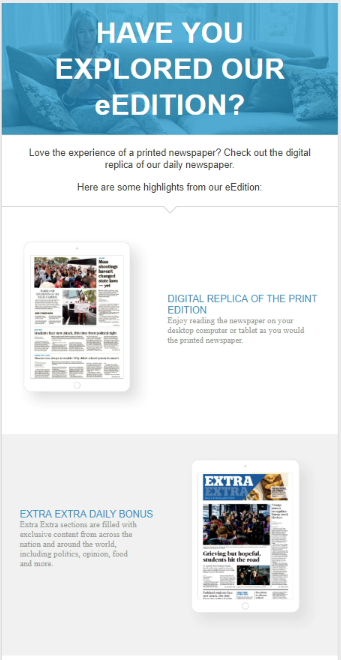 |
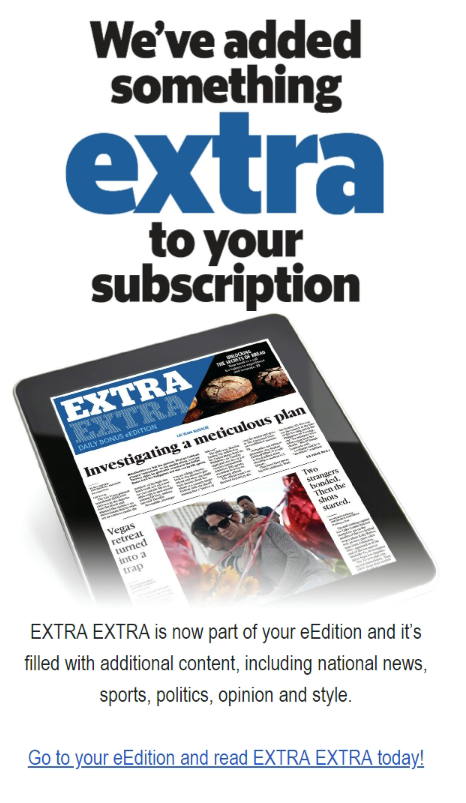 |
Reminding readers what they’ve paid for
Example: McClatchy Newspapers, reminding subscribers of perks
Publishers can use many styles of messages to point out the value of digital access, ranging from highly customized and targeted marketing to a more generalized message. The following email from McClatchy Newspapers is personal, friendly and brief. In a helpful tone, it reminds readers of four perks they are not taking advantage of and provides a bold, black link to activate their digital account “with a few easy steps.”
These and other appeals to go digital recognize an important aspect of user behavior: The more that subscribers interact with your services, the more they engage, potentially becoming long-term sources of revenue.
Customized email sharing: Chronicling the user’s reading experience
Example: The New York Times, showing subscribers what they’ve read
When readers engage digitally, they leave fingerprints that news organizations can use to remind them of the content they value, and make informed suggestions about new areas they may enjoy. In an anniversary email, the New York Times summarizes what the user has been reading, in effect telling the personal story of their subscription so far.
The note starts off with a friendly “Happy Anniversary” message with a celebratory tone and look. It quickly pivots to a reminder of the subscription’s value, documenting the Times’ expansive coverage, by exact number of articles and opinion columns since the subscription commenced. It then reinforces the personal connection, featuring a bar graph of the reader’s most-read sections and identifying the reader’s favorite writers.
Importantly, the note encourages deeper engagement. It points to specific articles the reader has missed, and suggests multimedia offerings and newsletters, including those by individual writers. While compiled with an algorithm, the anniversary notice aims for an enduring, personal connection, closing with the message: “Your Story is Just Beginning.”
 |
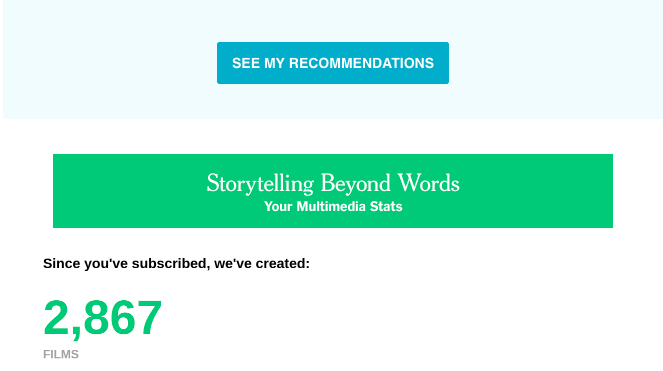 |
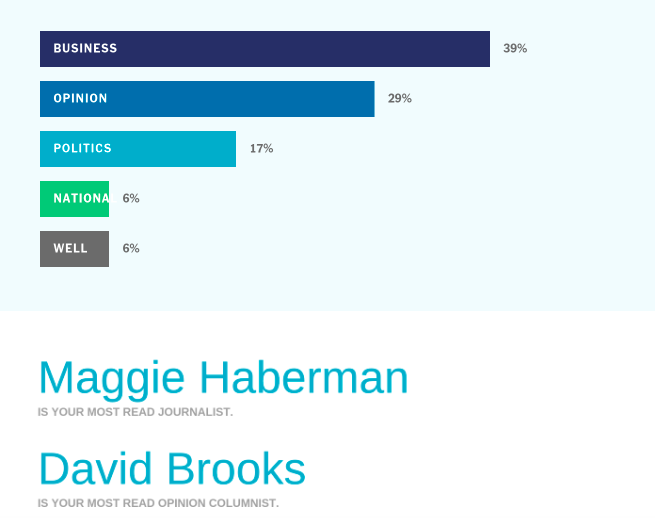 |
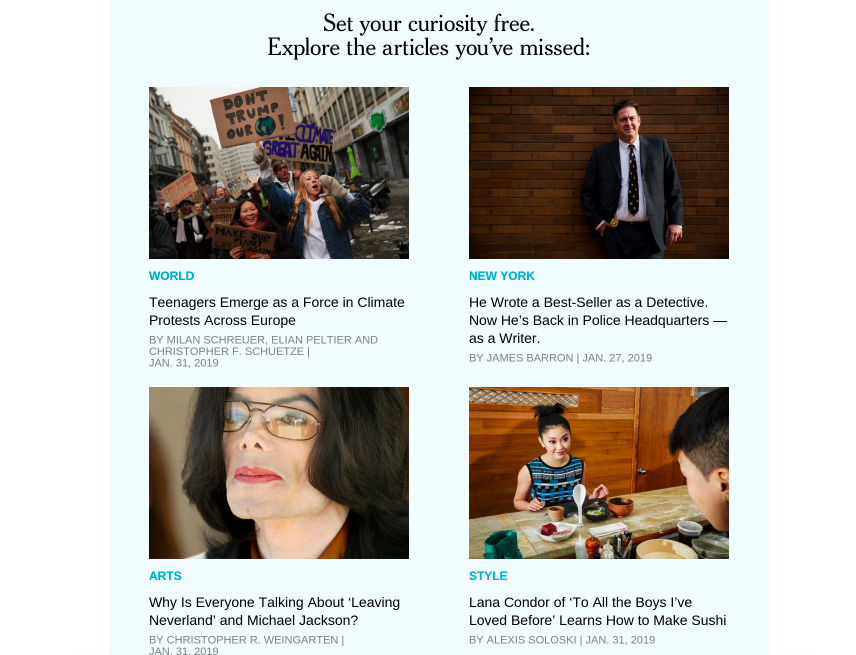 |
Engaging subscribers pays off in many ways
New organizations are well aware that subscribers often drop out when an introductory rate expires, a challenge that has long-term implications for revenue. In response, successful publishers are finding ways to strengthen the connection with readers after they have made a decision to subscribe.
The idea is for new subscribers not just to come on board but to stay on board. Rewards programs, membership services, special offers, events, bonus content and friendly guidance on navigation all help foster engagement. Loyal subscribers not only continue to pay year after year but are a natural market for other products and services a news organization may introduce.
Further, they may serve as your advocates in the community, building recognition and support via word of mouth. For example, the American Press Institute’s 2018 study “Paths to Subscription” found that one of the incentives to subscribe is knowing that friends or family are already getting the publication.
Deepening the connection to subscribers begins with adopting the right mindset and organizational culture. In the bygone era of ad revenues, news organizations weren’t highly incentivized to keep subscribers satisfied over time. But in today’s world, where it is vital to maximize reader revenue, publishers are embracing a much more service-oriented, user-friendly mindset.
This shift may come more easily to some organizations than to others, but the benefits are all-important – a core of paying customers that will sustain an organization’s long-term financial health.
You might also be interested in:
Interacting with your community and providing quality programming while providing the news may seem daunting, but it’s worth it.
Our belief in the brand and the business hasn’t wavered. When you’re a business with a mission, it becomes the only thing that matters.
Our mingles normally draw anywhere from 20 to 40 people. At a recent one, we had the mayor, a bank vice president, several retirees, a young entrepreneur and the owners of the bowling alley hanging out in our office, all chatting with each other and our newspaper staff.

